
Brutalist Interior Design: Everything You Need to Know
Brutalist interior design, an architectural style that originated in the 1950s and gained popularity in the 1960s and 1970s, is characterized by its raw, unfinished look. It prominently features exposed concrete, rough textures, minimal decoration, and industrial materials.
This style emerged as a counter to the sleek, polished modernism, emphasizing functionality and honesty in design. Despite its stark aesthetic, Brutalism has experienced a revival in contemporary design circles.
Origins of the Brutalist Interior Design Style
The term "brutalism" was first coined by Swiss-French architect Le Corbusier in the early 1950s. He used it to describe his vision of architecture that celebrated honest use of materials and rejected decorative elements. The term was later adopted by British architects Alison and Peter Smithson, who applied it to their own buildings made of raw concrete.
Brutalism quickly gained popularity and became a defining style for many public buildings in the 1960s and 1970s. Despite its controversial aesthetics, brutalism's emphasis on functionality and simplicity continues to influence modern architecture.
Characteristics of Brutalist Interior Design
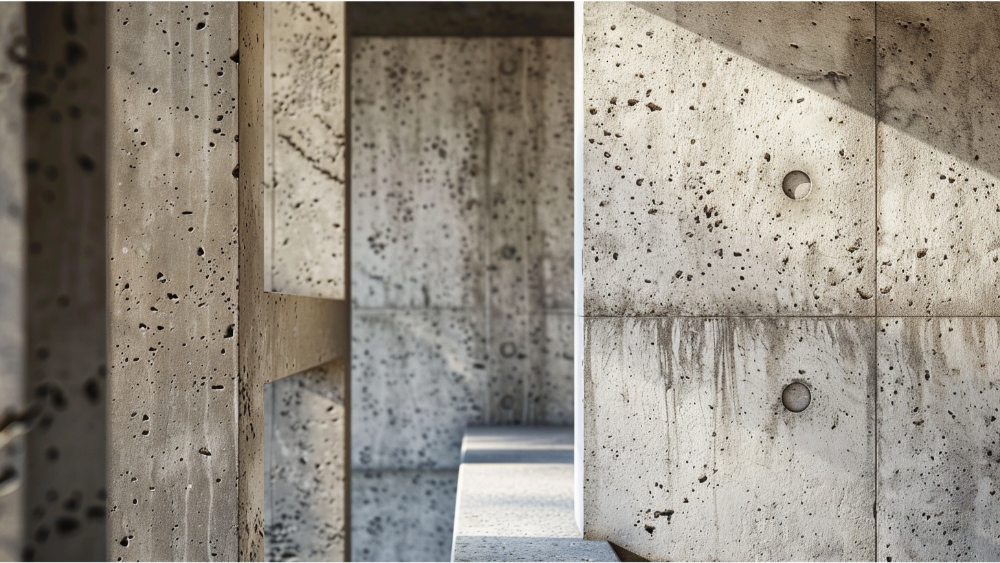
Brutalist design is characterized by its use of exposed concrete, rough finishes, and minimal decoration. This architectural style emerged in the mid-20th century and is often associated with an unadorned, raw aesthetic that emphasizes functionality over form. Spaces are often left unfinished, showcasing the natural imperfections of materials, such as visible seams and rough textures.
Additionally, brutalist buildings frequently incorporate large, geometric forms and heavy massing, creating a strong visual impact. This style also embraces asymmetry and irregular shapes, creating a sense of movement and dynamism in the space. The emphasis on honest materiality and structural clarity often results in an imposing, monumental presence that can be both striking and controversial.
Materials Used in Brutalist Interiors
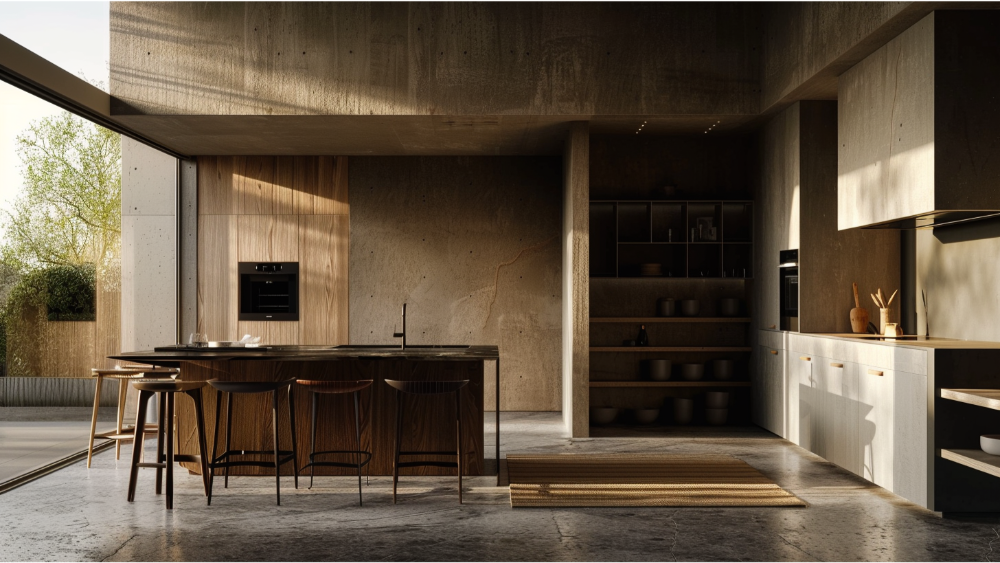
Concrete is the primary material in brutalist interiors, with its rough texture and utilitarian character epitomizing brutalism. It is often used for walls, floors, and even ceilings, creating a stark and powerful aesthetic.
Other frequently used materials include raw steel, wood, and glass. Raw steel is commonly utilized for structural elements and fixtures, providing a sleek yet industrial feel. Wood, often in its unfinished form, adds a touch of warmth and contrast to the otherwise cold and rigid look.
Glass is used to create large windows and open spaces, allowing natural light to flood the interiors and highlighting the raw materials. These materials are typically left in their natural state, without additional finishes or decorations, showcasing their true essence and contributing to the minimalist and functional nature of brutalist design.
Key Elements of Brutalist Interiors
Besides the use of natural materials, several key elements characterize brutalist interior design. Brutalist interiors are known for their simplicity and lack of decoration which can cause an interior designer to not be as needed. Spaces are kept uncluttered and design elements are kept to a minimum. This style emphasizes raw materials and structural elements.
Large windows and skylights are often incorporated into a brutalist building, allowing natural light to flood the space and highlight the raw materials used. This design choice creates a stark contrast between the rugged exterior and the inviting interior.
Brutalist interiors often feature bold, angular shapes and forms. These can be seen in furniture designs, architectural features, and even lighting fixtures. The use of raw, unfinished materials also adds to the distinctive aesthetic.
The Impact of Brutalism
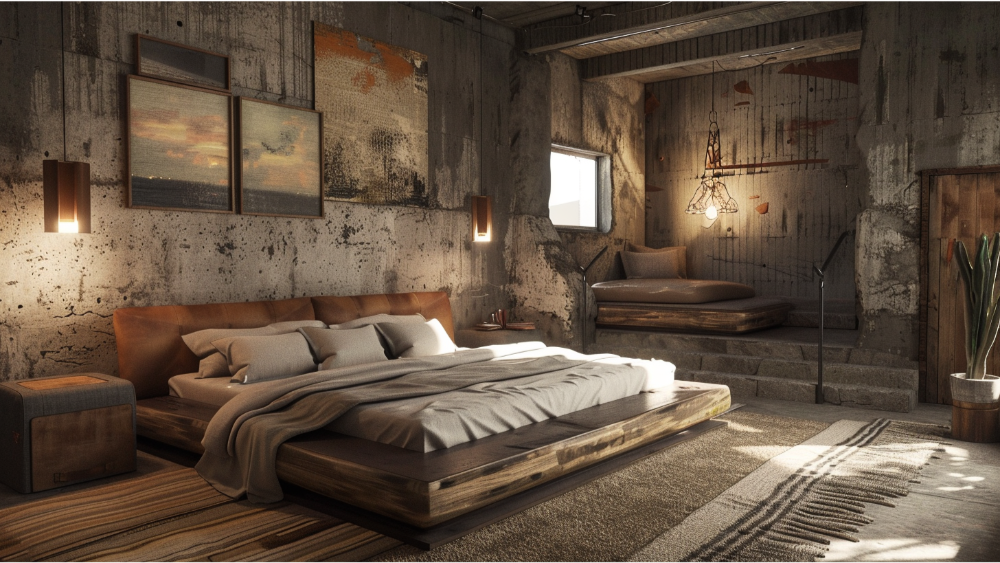
Brutalism not only had a significant impact on architecture but also influenced interior design, furniture design, and art. This architectural movement, characterized by its rugged and raw concrete structures, emphasized functionality and honesty in design. It paved the way for minimalist and industrial styles that are still popular today, with their clean lines, exposed materials, and utilitarian aesthetic.
The influence of Brutalism can be seen in the open spaces, unadorned surfaces, and practical elements that define these modern design approaches. Its legacy continues to inspire designers and artists who seek to create spaces and objects that prioritize utility and simplicity.
Revival of Brutalism
Although brutalist architecture fell out of favor in the 1980s due to its perceived harshness and lack of warmth, there has been a recent revival of this style. This resurgence is driven by a renewed appreciation for its bold, minimalist aesthetic and its focus on functionality. Additionally, many see brutalism as a reflection of a bygone era of architectural innovation, and its raw, unadorned surfaces are now being celebrated for their honesty and strength.
How to Style in a Brutalist Style?
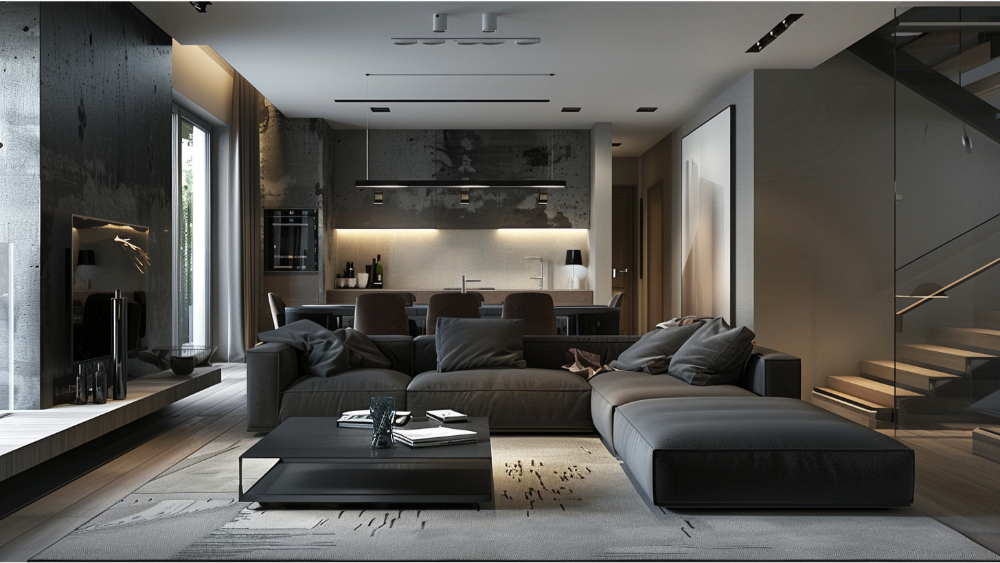
Many designers and architects are incorporating brutalist elements into their work, giving it a modern twist while still staying true to its origins. Brutalism, characterized by its raw concrete forms, massive structures, and minimalist design, the brutalist movement initially emerged post-World War II as a symbol of strength and functionality.
If you are looking to incorporate brutalist elements into your interior design projects feel free to contact us at Skyline build & design, here are some tips to help you achieve the look: As mentioned earlier, bare concrete is a key material in brutalist interiors. Consider incorporating it into your space through exposed walls, floors, or even furniture pieces.
Allow the materials to speak
Avoid clutter and excessive decoration. Focus on functionality and let the materials speak for themselves. Simplicity often leads to timeless elegance. Brutalism celebrates the natural imperfections of materials. Experiment with different textures like rough concrete, smooth wood, and sleek metal to add interest to your space.
Look for brutalist furniture pieces or architectural features with strong, angular, and geometric shapes. These will add a sense of dynamism to your space. Incorporate raw materials like concrete and metal to enhance the bold aesthetic.
Applying Brutalist Design in Modern Homes
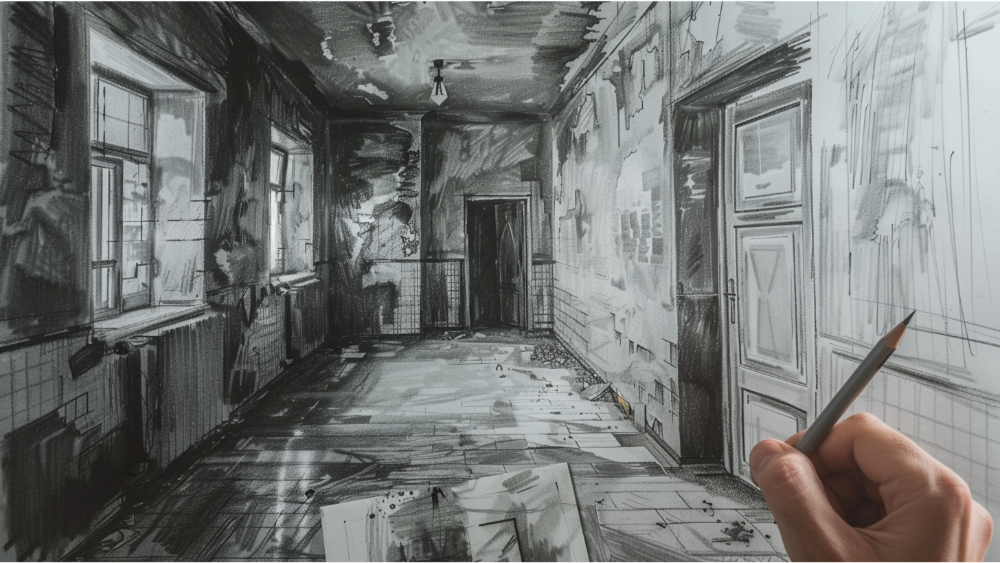
Brutalism may have originated in the mid-20th century, but it is still relevant and impactful in modern interior design. The key is to balance its strong and imposing aesthetic with more contemporary elements, such as softer textures and pops of color.
Incorporating brutalist elements into a modern home can create a sense of contrast and depth, adding visual interest to the space. This style also allows for a harmonious blend of indoors and outdoors through large windows and natural materials.
When applying brutalist design in modern homes, it's essential to strike a balance between functionality and aesthetics. Creating functional spaces that are also visually striking is a hallmark of brutalism, making it a popular choice for modern homes.
Frequently Asked Brutalist Interior Design Questions
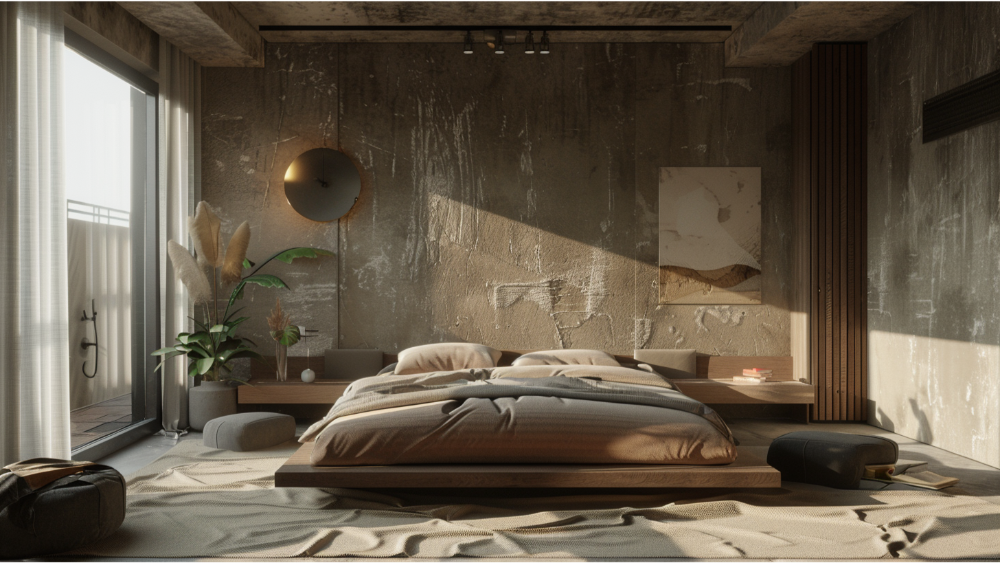
Is brutalism only used in architecture?
While brutalism originated in architecture, its influence extends far beyond, permeating various design disciplines such as interior design, furniture design, and art. In interior design, brutalism's raw and unrefined aesthetic can be seen in the use of exposed concrete, steel, and untreated wood, creating spaces that emphasize functionality and honesty of materials.
Is brutalist design suitable for residential spaces?
Brutalist elements can certainly be incorporated into residential spaces, but it is important to strike a balance between the raw aesthetics and creating a livable and comfortable environment. It may not appeal to everyone's taste, so incorporating subtle hints of brutalism may be a better approach.
Is brutalism the same as industrial style?
Although both styles share some similarities, such as the use of raw materials and a minimalist aesthetic, they are not the same. Industrial style is inspired by factories and warehouses, while brutalism celebrates honesty in design and rejects decorative elements.
Conclusion
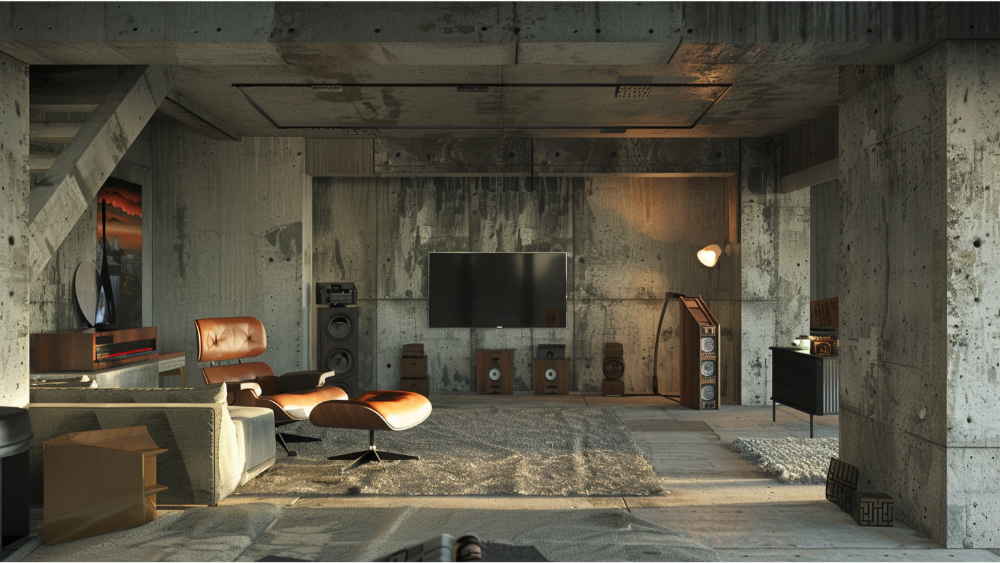
Brutalism, with its emphasis on raw materials, simplicity, and functionality, has left a lasting impact on the design world. Characterized by its use of concrete, steel, and glass, as well as its focus on geometric shapes and an unadorned, monolithic appearance, Brutalism stands out as a bold architectural statement. Whether through architecture or interior design, this style continues to inspire and influence designers and creatives.
Its revival in recent years for new custom home building shows that brutalism remains relevant and can be adapted to modern sensibilities while still maintaining its rugged character. Modern adaptations often blend brutalist elements with contemporary materials and softer textures, creating a balanced and harmonious aesthetic.
So if you are looking for a bold and unique aesthetic for your space, consider incorporating elements of brutalist design. From exposed concrete walls and bold structural lines to minimalist furnishings and industrial details, brutalism offers a distinct and powerful visual impact that can transform any space into a statement of strength and simplicity.




